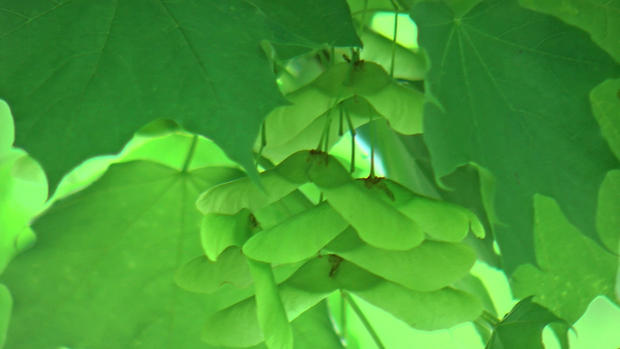A Blizzard Of Whirligigs: Why Are We Seeing So Many Flying Seeds?
MINNEAPOLIS (WCCO) -- At first, Twin Cities resident Lynne Wagner thought there was something wrong with the maple trees in her neighborhood.
"All the little helicopters seemed to be falling everywhere," Wagner said. "They're all over the street, all over the sidewalk, and I just wondered why."
She was not alone. Traci from Ramsey and Mari from St. Michael also emailed WCCO to ask: Why are we seeing so many flying seeds? Good Question.
"For about the last week to ten days, it's just call after call after call," said Gary Johnson, a professor of urban forestry at the University of Minnesota Extension. "I tell you, from a distance, it does look like parts of the tree are dead."
All of the maples seeds can look like a tree is dying, but that's not the case. Instead, Johnson says it is just an abundance of female flowers on the maples in that particular tree.
Maple trees have "boy" and "girl" flowers that grow on the same tree. The "girl" flowers produce the helicopters, or samaras as they are officially known.
"Sometimes, and this will vary from year to year, it's not equal 50-50. You'll have maybe 90-percent female flowers," he said. "I think one of the misperceptions is that this is somehow related to stress, which is not true. It's just basically the genetics of the tree."
Johnson says it has nothing to do with the health of the maple, but rather the amount of "girl" flowers the tree has that particular year.
He also says elms and cottonwoods are also having normal years. The seeds that on the trees now were actually formed last summer during a good growing season.
"Everything is pretty normal this year, it's just, I think that in different pockets there's some real heavy seeding," Johnson said. "And I also think too people are overly concerned with the unusual winter and lack of spring and are looking for symptoms or something that is wrong with their tree."
Jennifer Teegarden from the Minnesota Department of Natural Resources also has a theory. She says trees usually start flowering in March, but did not this year until April, so a freeze never killed off the early seeds. That could be a reason people are seeing more seeds in a shortened period of time.




